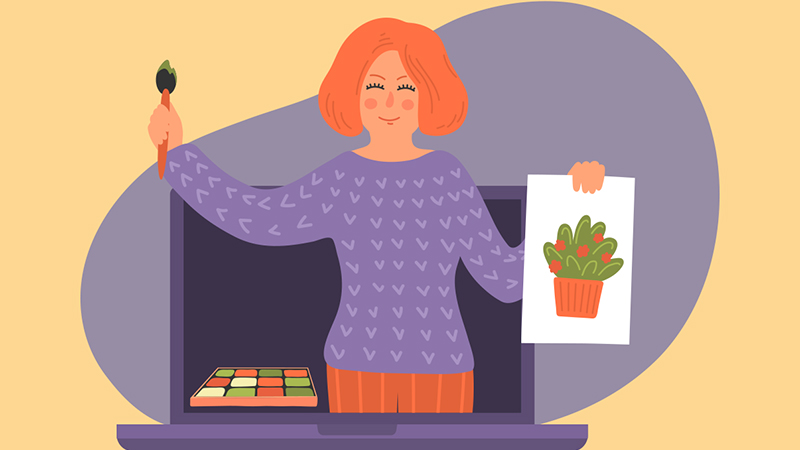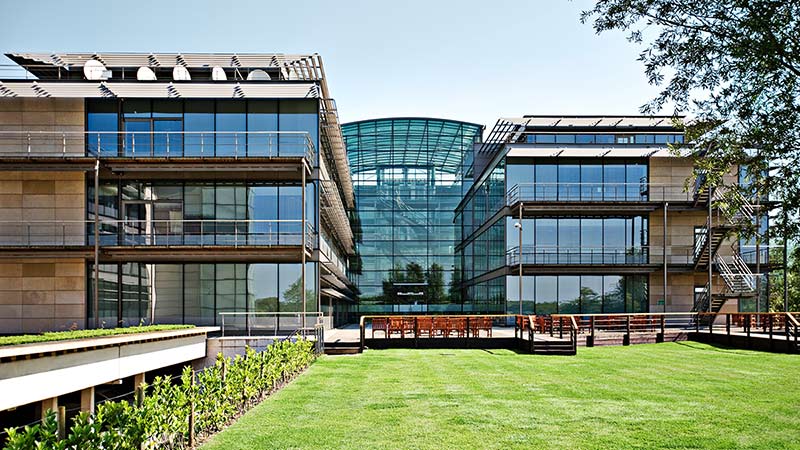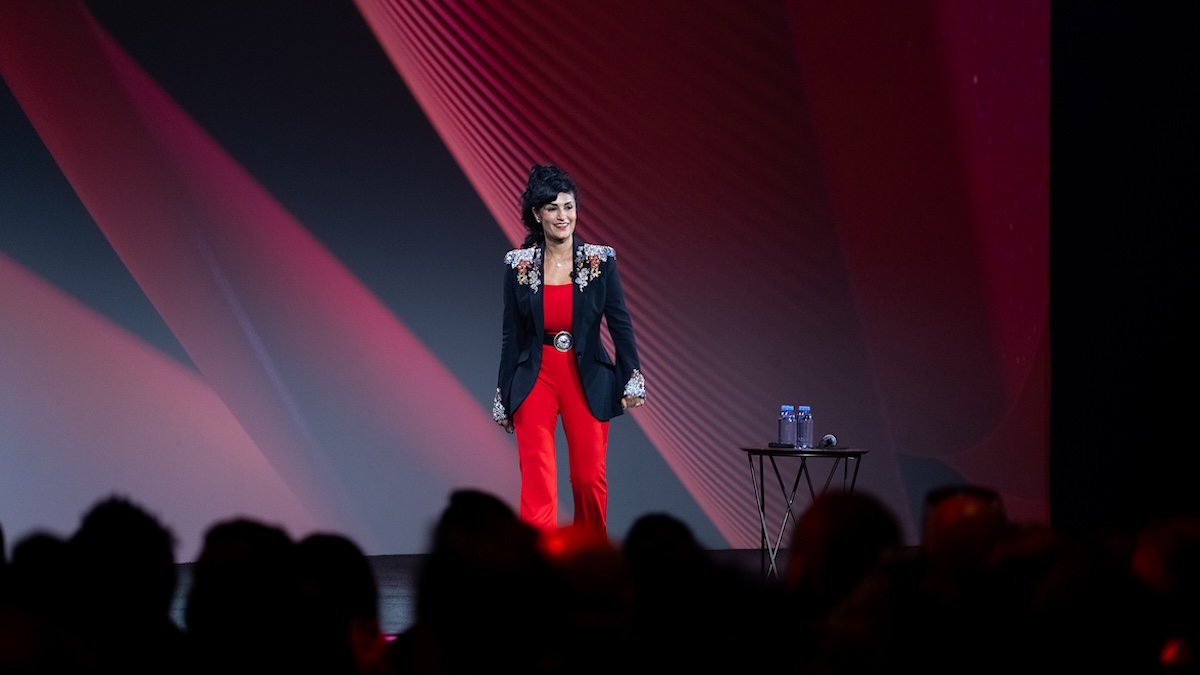Some things are thriving in the time of COVID-19. The earth’s atmosphere and facemask businesses, for example. And, of course, videoconferencing tools like Cisco Webex.
With a virtually planet-wide pause in face-to-face encounters, millions of interactions among people have been pushed into the online realm. Teachers, entrepreneurs, therapists, trainers, clerics, creatives—you name it, they’ve gone virtual. In many cases with unexpected results.
“I’m surprised how well I’ve been able to continue working with my clients, with very little decrease in the quality of their care,” says Coral Compagnoni, a psychotherapist who switched to video sessions out of her home in Cupertino, California after a regional shelter-in-place order took effect in March.
See also: Cisco virtual concert series raises $11,000 for artists and charities
In Los Angeles, elementary school teacher Alan Pulner now teaches an entire curriculum using video meetings and online tools such as ClassDojo, Freckle and Schoology. In a daily two-hour videoconferencing session, he teaches his 25 third-graders at Hobart Boulevard Elementary everything from PE and math to art, yoga, mindfulness and more.
“I do all the things I’d normally do in class this time of year, including growing seeds and raising live caterpillars,” says Pulner, who’s been logging eight-hour days online, including class prep and meetings with his church. “The students like it ’cause it’s all we got!”
The Mother of Invention
For some, the wholesale migration to online was a shock that forced new levels of creativity.
At the Rhode Island School of Design (RISD), faculty had just 10 days to adapt their syllabi for remote learning when the shutdown order came. That’s especially tough for a discipline that centers on the design and making of garments, their fit, texture, draping and so on.
Senior-year RISD students were hit hardest: They faced the cancellation of the end-of-year runway show that serves as a showcase for their thesis collections. The show is the culmination of a year’s in-studio work, to say nothing of a four-year investment in college.
“It was brutal,” says RISD Department Head of Apparel Design Lisa Z. Morgan, whose two five-hour classes with the seniors each week have since gone virtual. “The students have been devastated.”
But silver linings have emerged. Morgan says students and faculty have found new ways of working. For example, she’s seen a return to hand-sewing and more responsive designing, with students cutting up and reassembling old garments and materials in their home environments.
“Some of the work is becoming more expressive, with greater gesture, greater freedom,” Morgan says. “They’re learning to work with less rather than more, which addresses some issues with regard to sustainability and responsibility.”
And the seniors’ runway show? Thanks to a deft pivot by Morgan, they’ll showcase their collections in a book instead.
Lifers on Lockdown
Lauren Campedelli, an LA-based theater artist, also had to pivot when the shutdown came. With the help of video meetings, doing her proofreading day job from home was a smooth enough adjustment, as were her weekly yoga classes. But the prison re-entry theater project she’s co-leading, not so much.
The project, dubbed Lifers, gives a group of 18 formerly incarcerated lifers—whose sentences were recently commuted—the chance to spread their creative wings by writing and performing a play based on their life experiences and new goals. Switching from in-person collaborative sessions to video meetings was initially a train wreck.
See also: These are Webex's 4 best features
“The first part of every session was a bit like watching a Marx Brothers movie,” recalls Campedelli. “Suddenly these guys with little technical ability had to go from zero to 60. There were sound and video issues, Internet and device variability, not to mention people forgetting they were on mic and camera!”
Instead of a play, Campedelli and her co-facilitators decided to create a show by editing together footage of the men performing their parts in recorded video meetings, along with self-shot footage and title cards.
“It’s not going to be the most slick presentation, but the process has worked better than any of us expected,” Campedelli says. “Despite some frustrations, we all were grateful there was a way to keep going and not have the project be disbanded. Telling their stories was the most important thing.”
Will Video Become the New Normal?
It’s not the first time videoconferencing usage has surged in response to global events. After the 9/11 terrorist attacks, people turned en masse to videoconferencing instead of in-person meetings. But the technology at the time was clunky, complicated and costly, and once the travel bans were lifted, people went back to face-to-face meetings or audio-only calls.
Analyst Zeus Kerravala predicts it will be different this time. Today’s video meeting services are easy to use and the quality much higher. In addition, more people are working remotely, and businesses are more focused on boosting the kind of employee engagement that video meetings enhance.
LA-based singer-songwriter Julie Frost says she was able to co-create a song on her guitar, collaborating with another artist over video while stuck in London due to the shutdown.
“Video is good for crafting once you have the melody, but creating—not so much,” says Frost, who has written songs for artists like Selena Gomez and Latin Grammy winners Jesse & Joy, and is still living in a hotel in London’s Soho district.
And after the pandemic passes and in-person meetings resume?
Frost says: “I suspect people are going to keep a certain percentage of virtual options, because the world is so big and people from all over place can be together at the same time—which is miraculous.”
Ross Mead, founder and CEO of LA-based Semio, which makes software for social robots, predicts that video will become huge for businesses of all sizes. In particular, he says, COVID-19 work-from-home mandates have punched a hole in any argument against contractors working remotely.
“Video also opens up possibilities for talent,” says Mead, who loves the informality of video meetings and finds it humanizing to see people in their home environments on screen. “You don’t have to relocate, which is particularly important for people with the two-body problem [where couples want to work in the same place] or those who have children developing socially with their peers. Anybody globally can be a part of the workforce.”
RISD’s Morgan agrees. She recently had Gill Linton, CEO and lead editor of Byronesque.com, take part in a student critique over video from Paris.
“Normally, I would have waited till Gill was in New York to get her in studio,” Morgan says. “But it was as good and useful as if she’d been there in person.”
###
The contents or opinions in this feature are independent and may not necessarily represent the views of Cisco. They are offered in an effort to encourage continuing conversations on a broad range of innovative technology subjects. We welcome your comments and engagement.
We welcome the re-use, republication, and distribution of "The Network" content. Please credit us with the following information: Used with the permission of http://thenetwork.cisco.com/.




